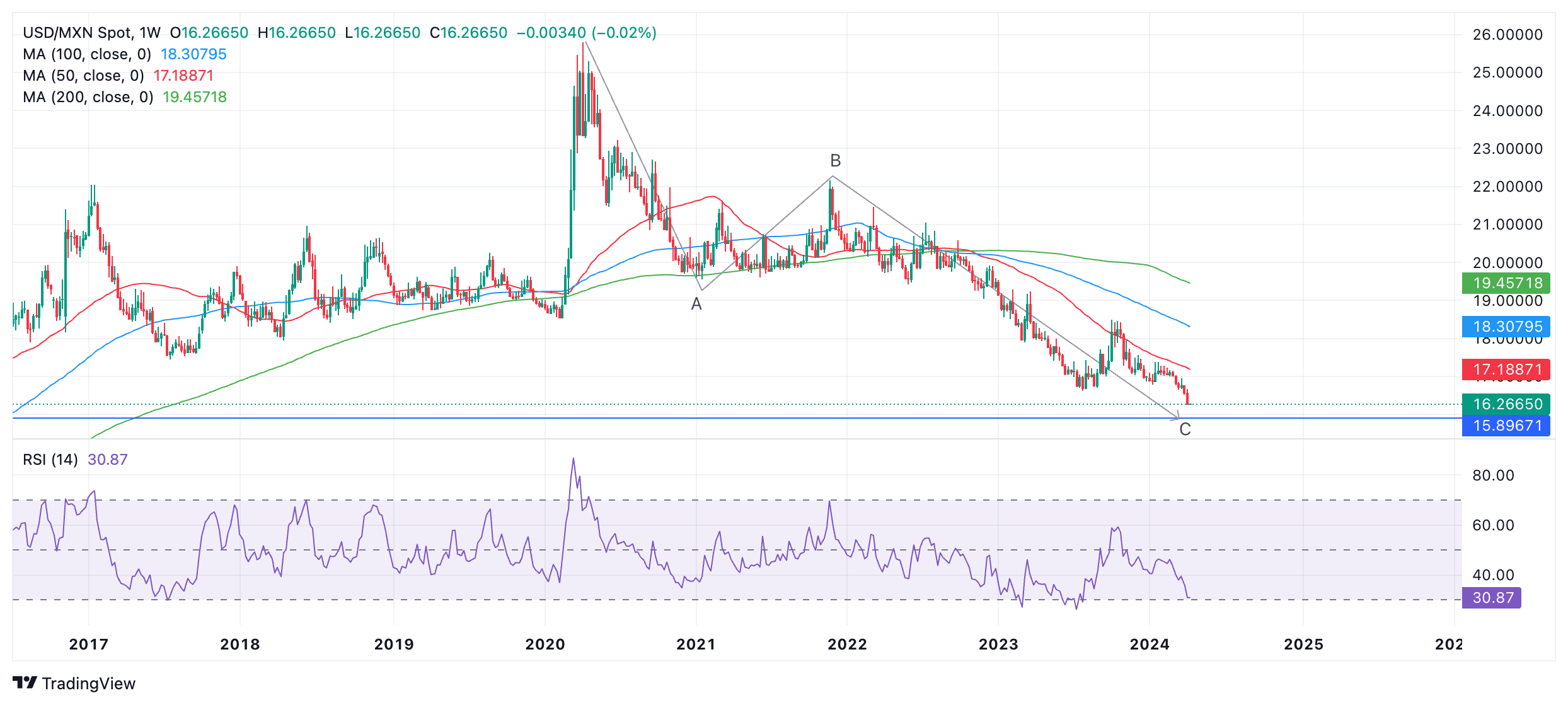- The Mexican Peso continues to rise to almost nine-year highs against the US Dollar (USD).
- Mexican inflation data for March will be published on Tuesday, which could cause volatility in the Peso.
- A data above what was expected would indicate that interest rates remain high, which would increase demand for the MXN.
The Mexican Peso (MXN) trades at nearly nine-year highs below 16.30 against the US Dollar (USD) on Tuesday as it continues its long-term bullish trend.
The next major release for the pair is Mexican inflation data for March, due at 12:00 GMT and likely to influence the outlook for interest rates in the country, a key factor for currency valuations.
The Mexican peso advances while waiting for the CPI
The Mexican peso will likely be affected if the Mexican inflation rate deviates significantly from analysts' expectations.
Mexican headline inflation is expected to increase by 0.36% monthly in March, after registering a rise of 0.09% in February.
Core inflation is expected to rise by 0.51% after a 0.49% increase in February.
The Mexican Peso is likely to appreciate if inflation is higher than expected, as this will mean that the Bank of Mexico (Banxico) will have to keep interest rates higher for longer. Higher interest rates tend to increase demand for a currency by attracting greater inflows of foreign capital.
The bank reduced interest rates from 11.25% to 11.00% at its March meeting after seeing a gradual decline in inflation; However, the meeting minutes made clear that future decisions will depend on data and that the overall outlook for inflation remains elevated.
Technical analysis: USD/MXN accelerates the downtrend
USD/MXN has accelerated the pace of its long-term downtrend. The trend started after the pair reached a high of 25.76 in April 2020 – it has now fallen to 16.20. Since “the trend is your friend”, it is likely to spread.
The pair is likely displaying a three-wave measured movement pattern. These are composed of a wave A, B and C, with wave C extending to a similar length to wave A, or a 0.618 Fibonacci ratio of A.
USD/MXN Weekly Chart

If this is the case, the price has almost reached the point where C will equal A, calculated at 15.89. It has also already surpassed the 0.625 Fibonacci level.
It has also already surpassed the conservative target for the end of C at the 0.618 Fibonacci extension of A (at 18.24).
Once the pattern is completed, the market usually reverses its trend or undergoes a substantial correction.
The Relative Strength Index (RSI) is sharply converging with price, a sign that the downtrend could be losing momentum. USD/MXN has broken through the 2023 lows, but the RSI has not done the same. This lack of correlation is a bullish sign. It could lead to an upward correction.
However, prices have not yet reacted, so bullish expectations remain speculative and unconfirmed.
economic indicator
Underlying inflation
The underlying inflation index published by the Bank of Mexico is a measure of price developments by comparing the retail prices of a representative shopping basket of goods and services, excluding taxes and energy. The purchasing power of the Mexican peso is dragged down by inflation. The inflation rate is a key indicator as it is used by the central bank to set interest rates. Generally speaking, a high reading is considered positive (or bullish) for the Mexican peso, while a low reading is considered negative (or bearish).
Read more.
Next post: Tue Apr 09, 2024 12:00
Periodicity: Monthly
Consensus: 0.51
Former: 0 ,49
Fountain: National Institute of Statistics and Geography of Mexico
Source: Fx Street
I am Joshua Winder, a senior-level journalist and editor at World Stock Market. I specialize in covering news related to the stock market and economic trends. With more than 8 years of experience in this field, I have become an expert in financial reporting.






